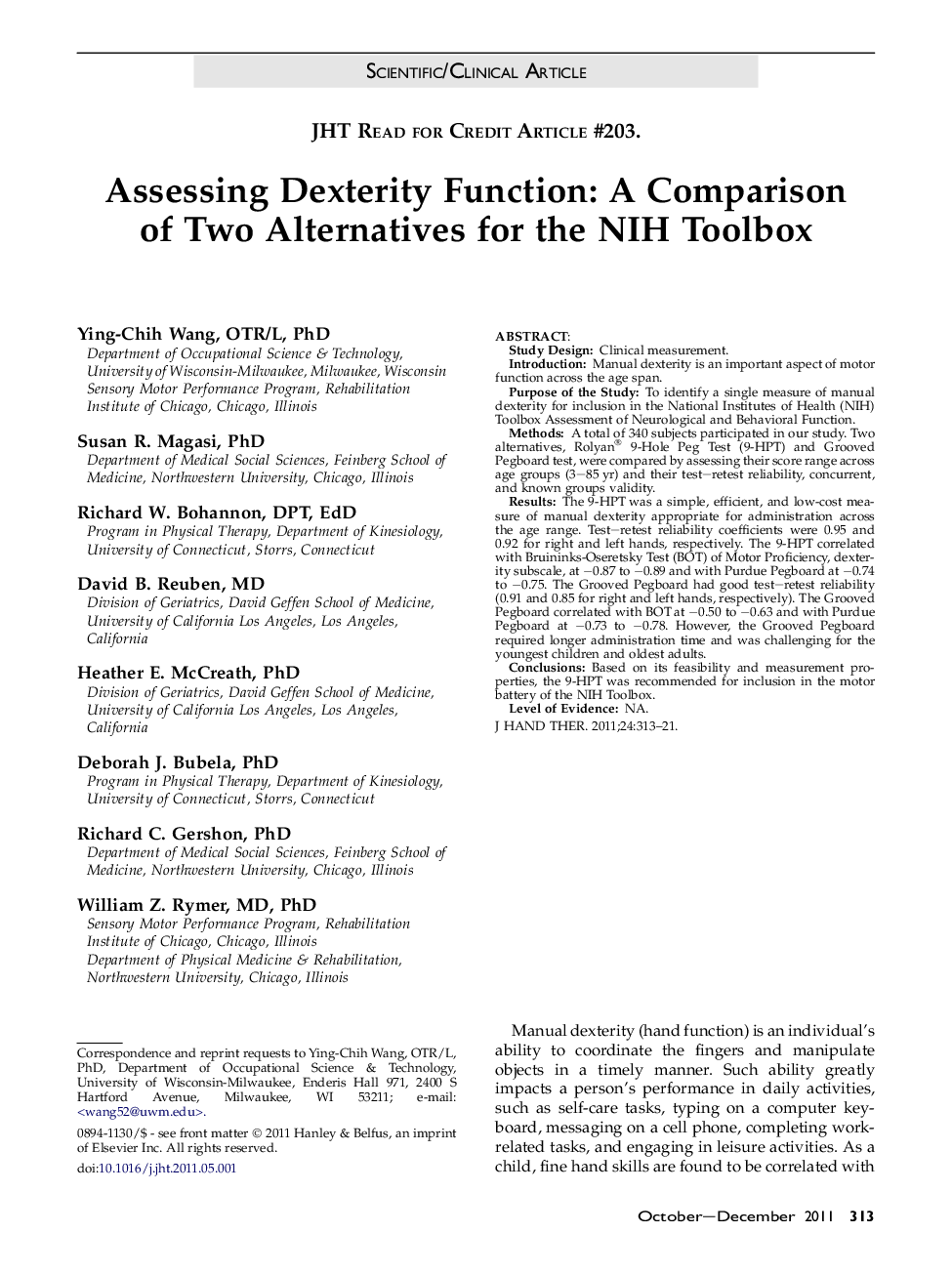| Article ID | Journal | Published Year | Pages | File Type |
|---|---|---|---|---|
| 2698391 | Journal of Hand Therapy | 2011 | 9 Pages |
Study DesignClinical measurement.IntroductionManual dexterity is an important aspect of motor function across the age span.Purpose of the StudyTo identify a single measure of manual dexterity for inclusion in the National Institutes of Health (NIH) Toolbox Assessment of Neurological and Behavioral Function.MethodsA total of 340 subjects participated in our study. Two alternatives, Rolyan® 9-Hole Peg Test (9-HPT) and Grooved Pegboard test, were compared by assessing their score range across age groups (3–85 yr) and their test–retest reliability, concurrent, and known groups validity.ResultsThe 9-HPT was a simple, efficient, and low-cost measure of manual dexterity appropriate for administration across the age range. Test–retest reliability coefficients were 0.95 and 0.92 for right and left hands, respectively. The 9-HPT correlated with Bruininks-Oseretsky Test (BOT) of Motor Proficiency, dexterity subscale, at −0.87 to −0.89 and with Purdue Pegboard at −0.74 to −0.75. The Grooved Pegboard had good test–retest reliability (0.91 and 0.85 for right and left hands, respectively). The Grooved Pegboard correlated with BOT at −0.50 to −0.63 and with Purdue Pegboard at −0.73 to −0.78. However, the Grooved Pegboard required longer administration time and was challenging for the youngest children and oldest adults.ConclusionsBased on its feasibility and measurement properties, the 9-HPT was recommended for inclusion in the motor battery of the NIH Toolbox.Level of EvidenceNA.
